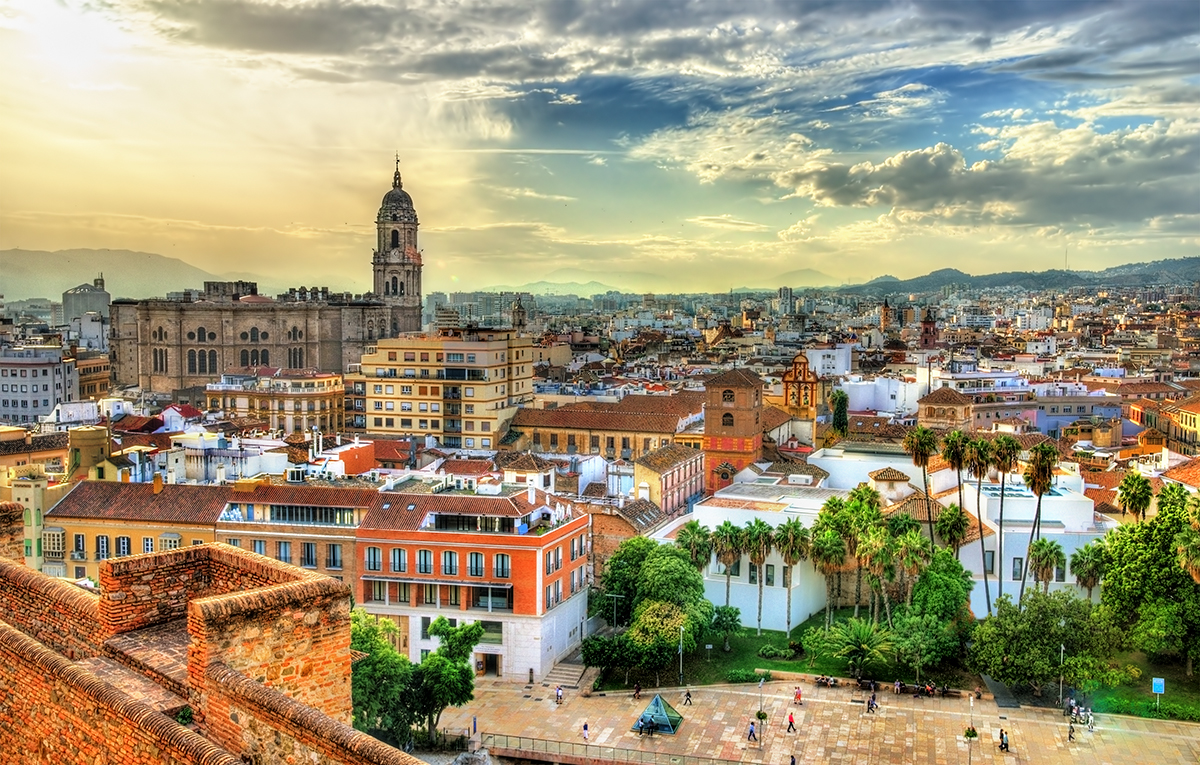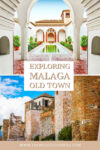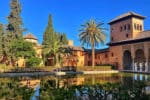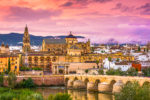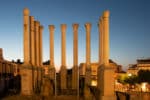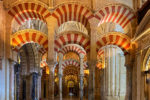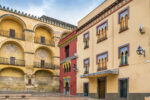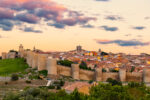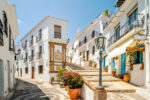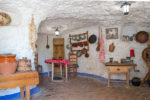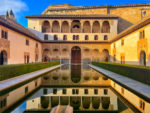Mainly known for being the capital of Costa del Sol, Malaga is a surprisingly ancient city. By the 6th century BC, it was already a leading Phoenician commercial centre. The first city walls of Malaga were built by the Phoenicians. Today, the area that was contained within these city walls is Malaga Old Town or the Historic centre.
After the Phoenicians, Malaga became a Roman city and, later, a Moorish stronghold. The main Roman site in Malaga Old Town is the Roman Theater. And in true Andalusian fashion, it lies at the foot of the Moorish Fort – Malaga Alcazaba. The Alcazaba and Gibralfaro Castle, another Moorish stronghold, dominated the walled city of Malaga and provided protection for its residents in times of trouble. That’s right, Malaga has not one but two Moorish forts.
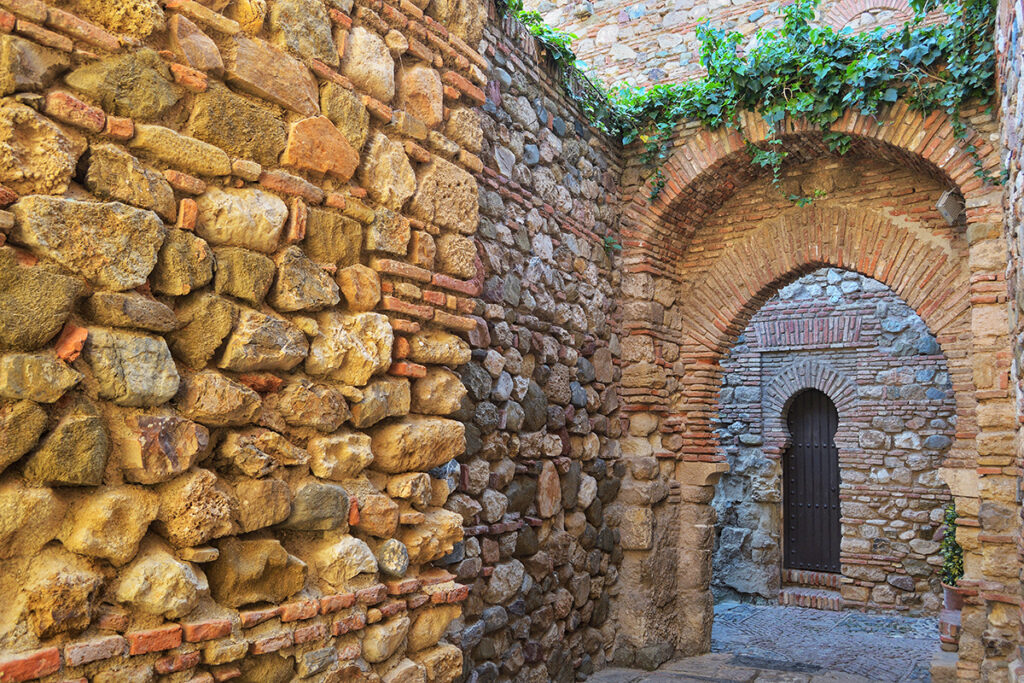
Overall, Malaga’s old town is an unexpected mixture of Roman, Moorish, and Catholic monuments. Much like Cordoba with its Mosque-Cathedral and the Roman Bridge, or Segovia with its enormous Roman aqueduct and dreamy Alcazar.
And that’s before we even get to Picasso, who was born here, in Malaga. So here are 12 unmissable things to do in Malaga. You can easily see most of these sites in a day. Or spend a weekend in town and stay at one of the charming boutique hotels in Malaga.
Tours of Malaga Old Town
Malaga’s old town is easily walkable, but if you prefer to learn about the history and culture of the city while strolling along, consider taking one of the guided tours.
The 3-hour Walking Tour will take you to most of the sites mentioned in this guide.
If walking on your own two feet doesn’t sound enticing, you can explore Malaga’s old town from a Private Electric Tuk-Tuk. This tour is particularly convenient if you are travelling as a group or a family, since the tuk-tuk can be shared by up to 4 people.
And if you are looking for something different and a little more interactive, consider the 3-Hour Private Sightseeing Treasure Hunt across the old town of Malaga.
Alcazaba
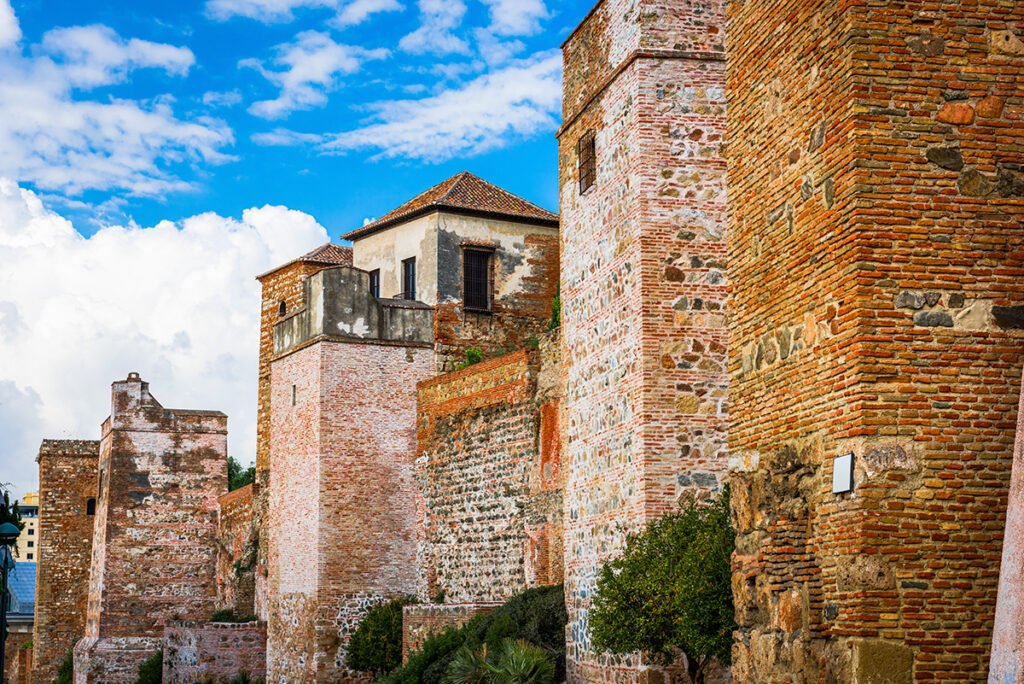
The word Alcazaba comes from Arabic ‘AL-qasbah’, meaning a fortification within a walled town. It was a common defensive fortification during the Arab rule on the Iberian Peninsula. Built to withstand attacks from enemy forces, it is not surprising that alczabas weathered the centuries quite well and can be found in many old towns across Spain today. You may have seen the imposing alcazaba in the Alhambra complex in Granada.
Malaga’s alcazaba is considered the best preserved Moorish fortification in Spain. It was originally built in the 11th century, on the foundations of an earlier Phoenician structure, on the slopes of the Gibralfaro mountain. The 15.000-square- meter complex contains 3 palaces and is surrounded by 3 defensive walls, fortified by more than 100 towers.
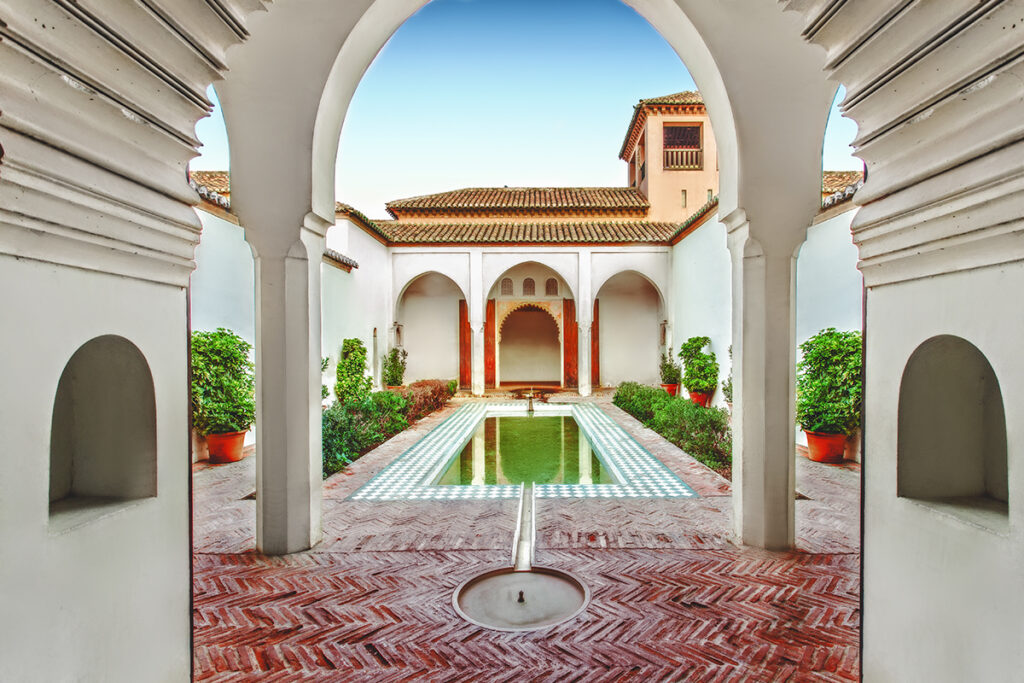
The main entrance to the Alcazaba is through Puerta de la Boveda or the Vault Gate (you can purchase the tickets online in advance). Inside the fortress, you’ll also find the Archaeological Museum that preserves some Phoenician, as well as Moorish artifacts that were discovered at the site.
Don’t miss Mirador de la Alcazaba – a lookout along the northwest wall of the fortress that gives a fantastic view of the Roman Theatre lying at the foot of alcazaba’s wall. Some of the stones from the Roman building were used in the construction of the Alcazaba.
Roman Theatre
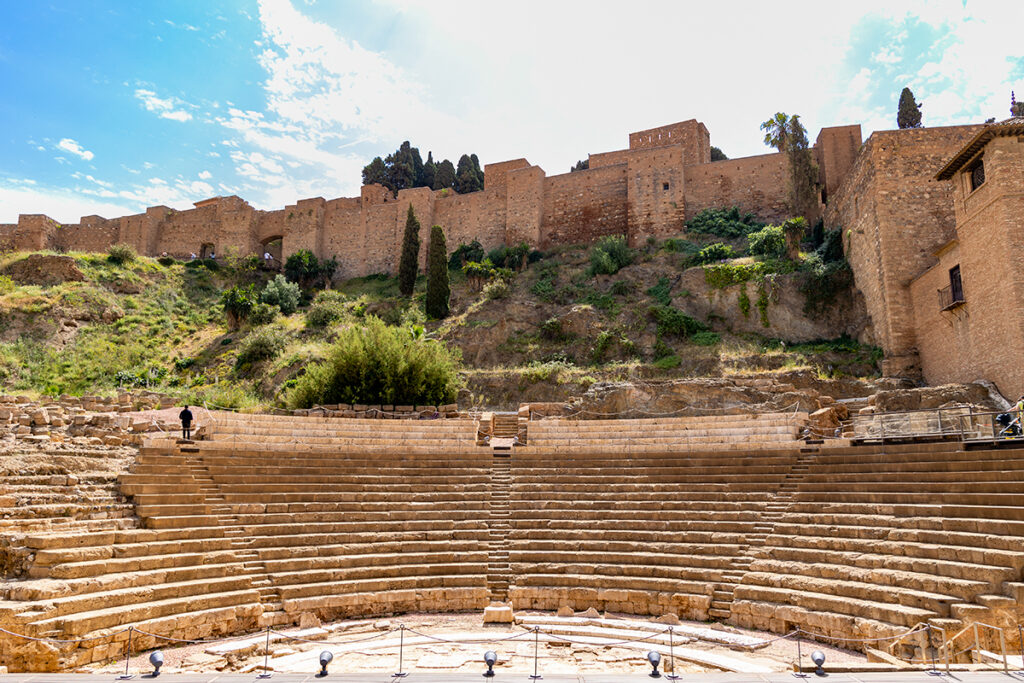
Malaga’s Roman Theatre was built during the first years of the Roman Empire, in the 1st century AD, during the reign of Emperor Augustus. In Roman republican times, this site was occupied by public baths.
The Theatre is reasonably well preserved, and you can distinguish the stage, the richly decorated orchestra area with marble slabs, and the rows of audience seats arranged in a semi-circle around the stage. It’s its day, the theatre was the centre of entertainment in Roman Malaka.
The Arabs dismantled part of the theatre and used the stone blocks for the construction of fortresses in the city. The remnants of the theatre housed a fish factory and later became buried under houses and alcazabra’s walls.
It was re-discovered only when the House of Culture museum was built at the site in the 1940s. The museum was later demolished to reveal more of the Roman Theater.
Gibralfaro Castle
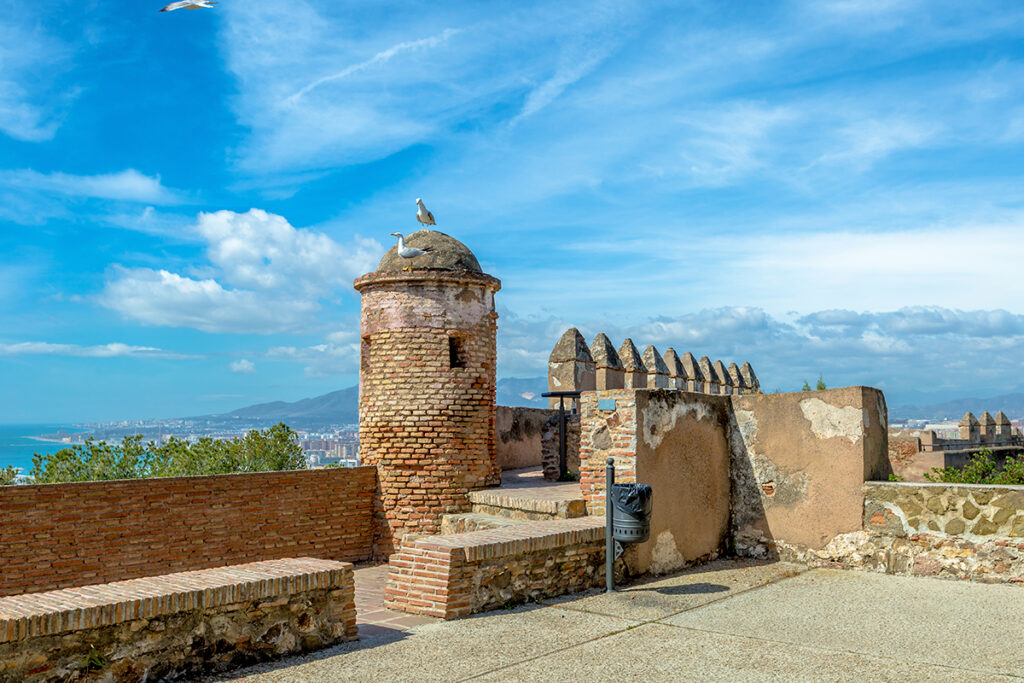
Connected to the Alcazaba by a stone passageway – coracha terrestre, Gibralfaro Castle was built between 1333 and 1354 when Malaga belonged to the Nasrid Empire, who ruled from Alhambra in Granada.
Most of the castle is now gone, but the walls still stand. You can walk the entire perimeter of the walls and enjoy spectacular views of Malaga old town framed by the Mediterranean coast and Malaga mountains.
Some of the sites to check out at Gibralfaro Castle are the Torre Blanca – one of the largest towers of the castle walls, the 40-meter-deep Airon Well and some stone water tanks. There is also a little museum at the Interpretation Center that’s worth a quick visit.
Streets of Malaga Old Town
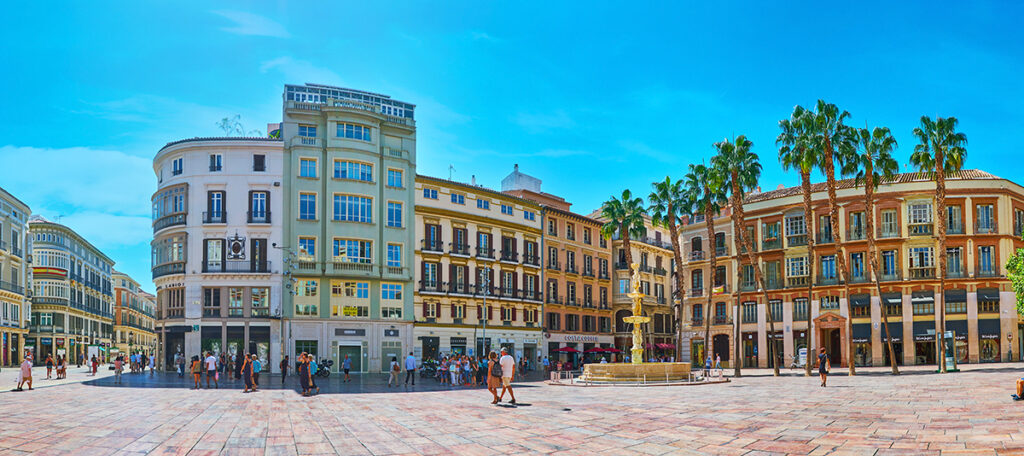
The streets of Malaga’s old town hide some lovely hidden gems. At the Plaza de la Constitución, you’ll find the charming Pasaje de Chinitas – a small and narrow passage in the shape of a cross that connects Plaza de la Constitución with Fresca Street and Santa María Street with Nicasio Calle Street, with a small square where the streets meet.
On Calle Carrateria, you’ll find a restored section of Roman city walls that stand 15 meters high and 4 meters thick. It’s not a long section, about 8 meters, but it gives you a good idea of what Roman Malaka looked like in the first few centuries AD. If you would like to get a sense of the entire walled city of Malaga, don’t miss the model and the map of the walls at the exhibit in Gibralfaro Castle.
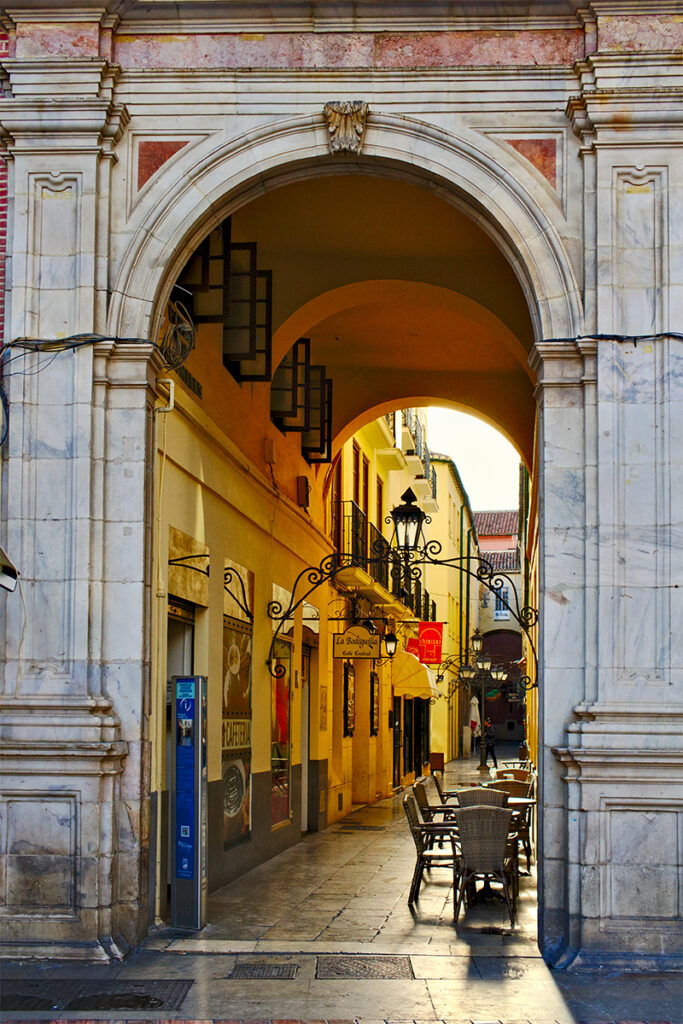
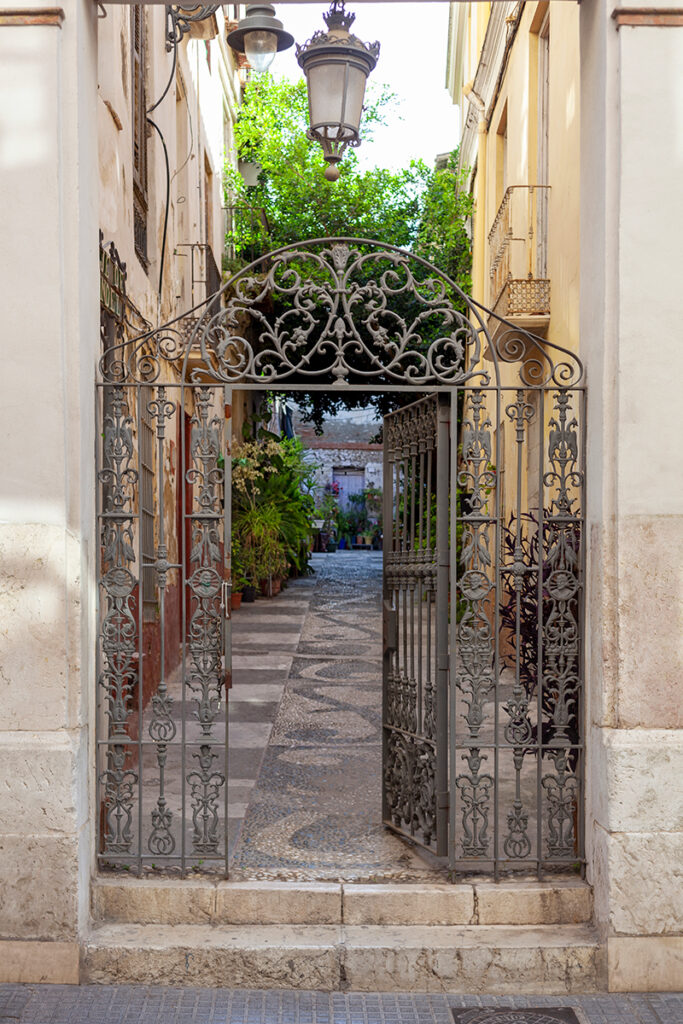
The central street in the old town is Calle Larios – most other streets lead to it. It is a popular shopping district of Malaga’s Historic Center, so if you feel like browsing the shops while soaking in the history of Malaga, head to Calle Larios.
Malaga Cathedral
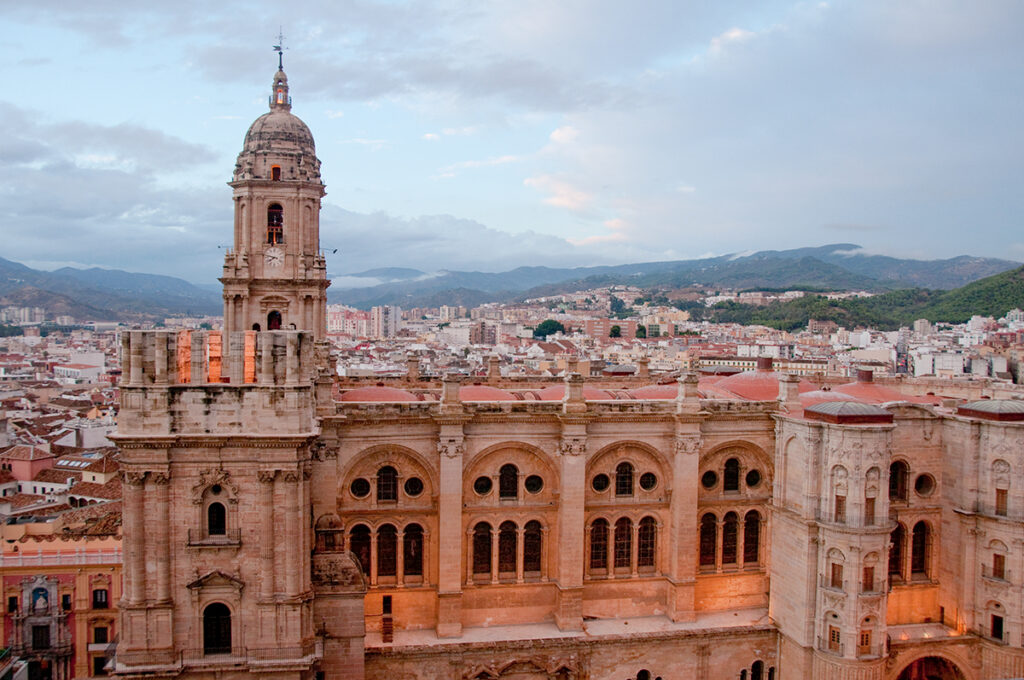
Built between the 16th and 17th centuries, Catedral de la Encarnación de Málaga is a Roman Catholic Church housed in a beautiful Renaissance building with a Baroque facade and Gothic altarpiece. Like most other buildings in the old town of Malaga, the cathedral was built on the site of an earlier Moorish structure – a mosque, in this case.
Perhaps the most famous feature of Malaga Cathedral is that it is unfinished. While its north tower is the second-highest cathedral tower in Andalusia, after the Seville Cathedral, its south tower has never been finished, which gave the cathedral the nickname of “La Manquita” – the One-Armed Lady.
As the story goes, to fund the building of the Cathedral, the crown introduced a heavy tax on the ships docking in Malaga, bringing trading goods from the Americas. But the funding ran out before the cathedral was completed. So it stands to this day with just one arm.
If you don’t mind climbing 200 steps, you can take a tour of the roof of the cathedral (tickets are sold at the Bishop’s Palace next door) for sweeping views of the city.
Malaga Bishop’s Palace
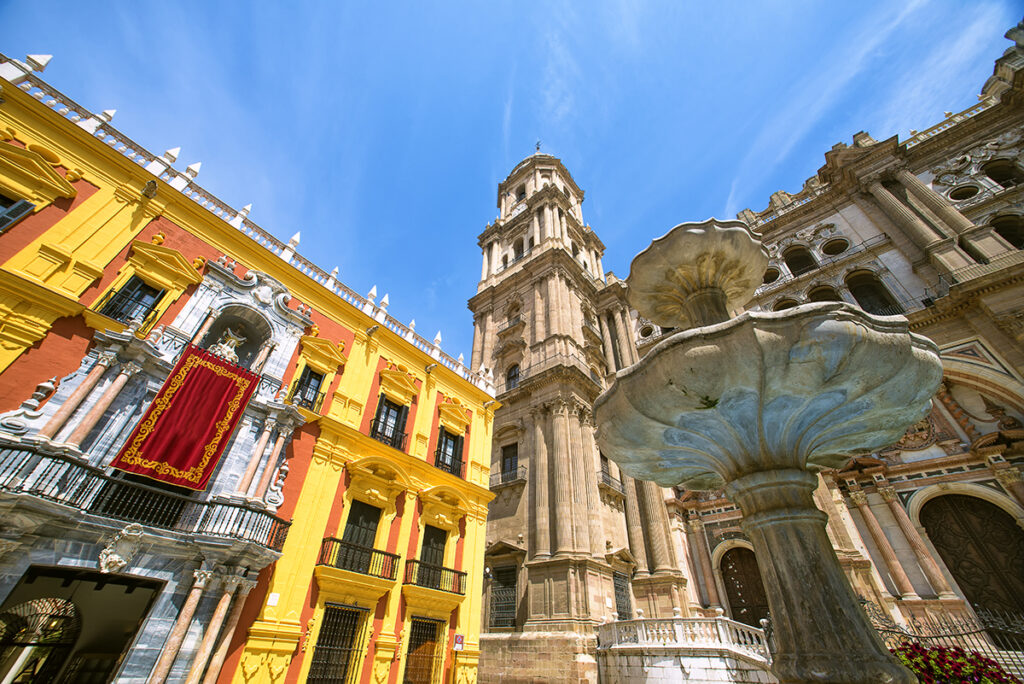
Next door to the cathedral, another imposing ecclesiastical building was built a century later – the Bishop’s Palace. With its stately facade laid out in red, white, pink and grey marble, the Bishop’s Palace is one the most striking buildings in Malaga old town.
The palace is laid out around two courtyards, one private and one publicly accessible. There are several museums inside the palace, starting with the permanent exhibition from Sub-Saharan Africa in the lobby.
If you don’t wish to enter the palace, you can enjoy its beautiful exterior while relaxing with a cold beer in hand at Taberna Del Obispo.
Malaga Parador
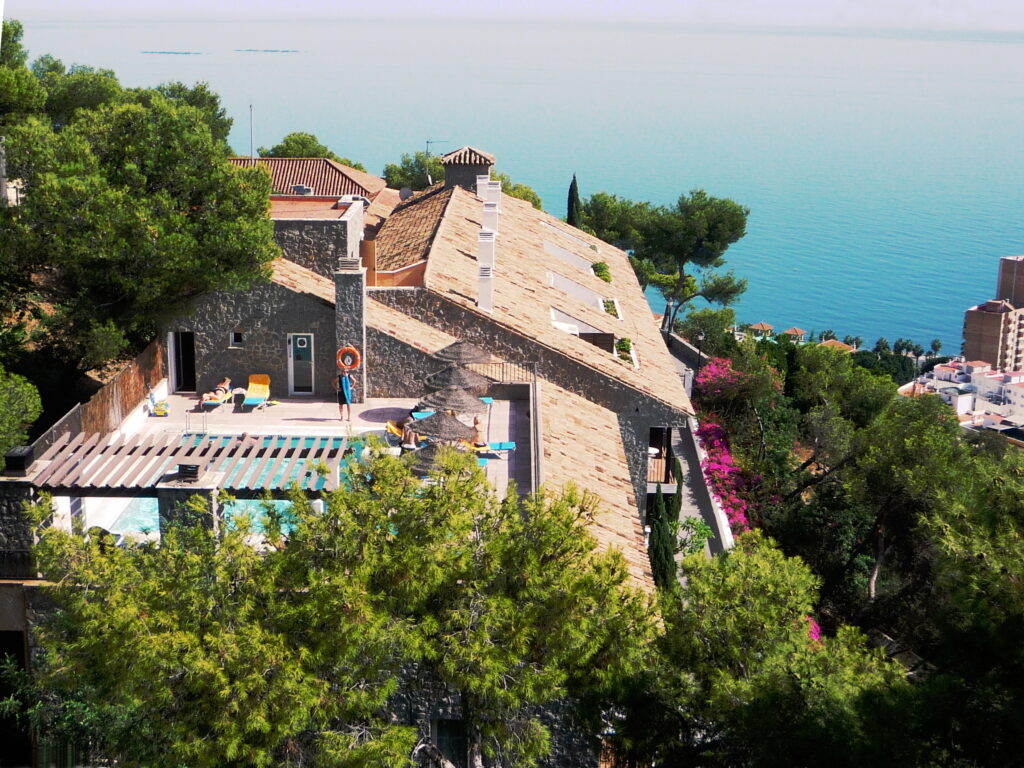
Up the hill from the historic city center, you’ll find Parador de Málaga Gibralfaro – a state-owned hotel located on the former site of a Moorish castle. It’s not one of the most charming paradors in Spain, but it has some of the best panoramic views of the city.
You don’t have to stay at the Parador to enjoy the views. The park that surrounds the building has fantastic views of the city and the bay.
Picasso Birthplace
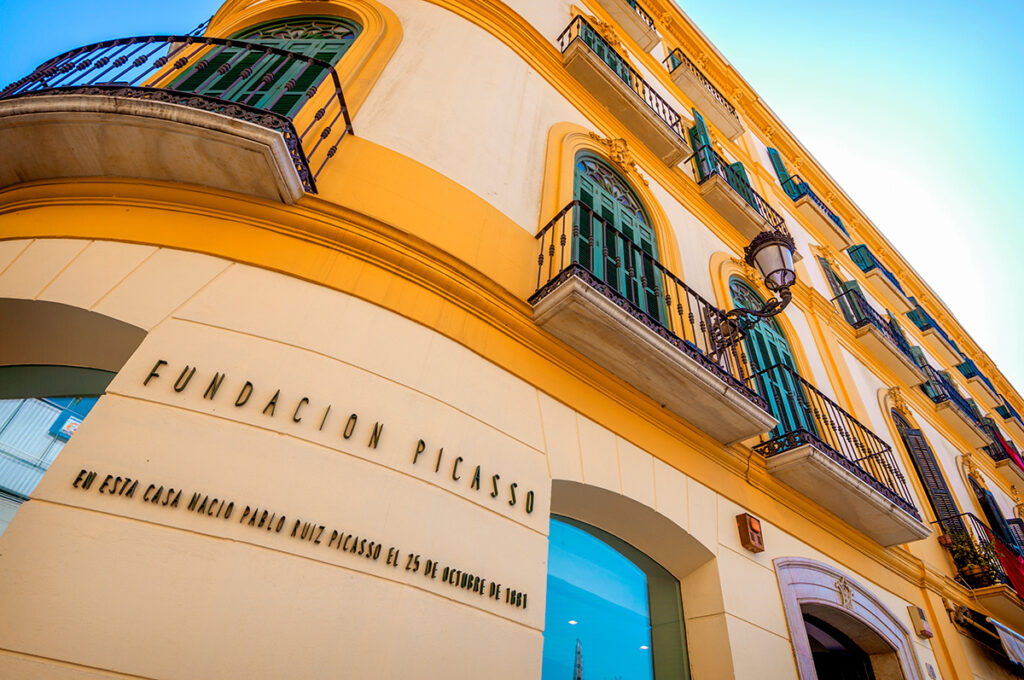
Tucked away in Malaga’s historic center, in Plaza de La Merced is the house where Pablo Picasso was born in 1881. Picasso’s family lived on the first floor of the house, known today as Picasso Casa Natal, from 1880 to 1883. In 1883, the family moved to another house, also in Plaza de la Merced where they stayed for a few years until moving to Barcelona in 1891, when Picasso was only 10 years old. And even by this tender age, Picasso had already become an accomplished painter.
While Picasso only spent his early childhood in Malaga, the city has always been close to his heart and his art. This is probably why the members of the Picasso family donated almost three hundred artworks to the Picasso Foundation in Malaga in 2003. Some of these artworks are displayed upstairs, in the casa natal, while others are in the Picasso Museum nearby.
Picasso Museum
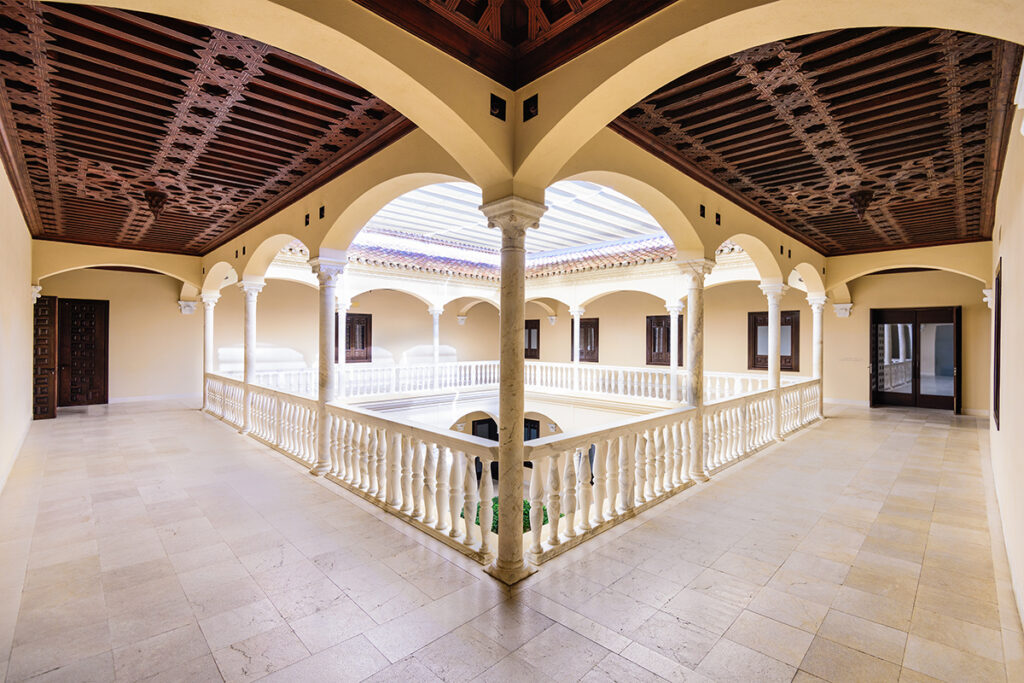
Located in the charming 16th century Renaissance palacio – Buenavista palace, Picasso Museum displays more than 200 of the artist’s works. The exhibition is spread out across the rooms and hallways of the palace and traces Picasso’s entire artistic career. Unless you are an art historian, it’s a good idea to pick up a guidebook that highlights some of the most important paintings, sketches, and sculptures on display.
Not surprisingly, the collection of Picasso paintings overshadows the palace in which they are housed. But Buenavista Palace is a hidden gem of a place. It was built in the foundation of a Nasrid palace, and you can still see the original tower east of the main courtyard.
But true hidden gems are concealed in the palace’s cellar. Underneath the building, you can see the 4-meter-tall remnants of the first Roman city wall of Malaga – the raw, unrestored version of Calle Carrateria walls.
Carmen Thyssen Museum
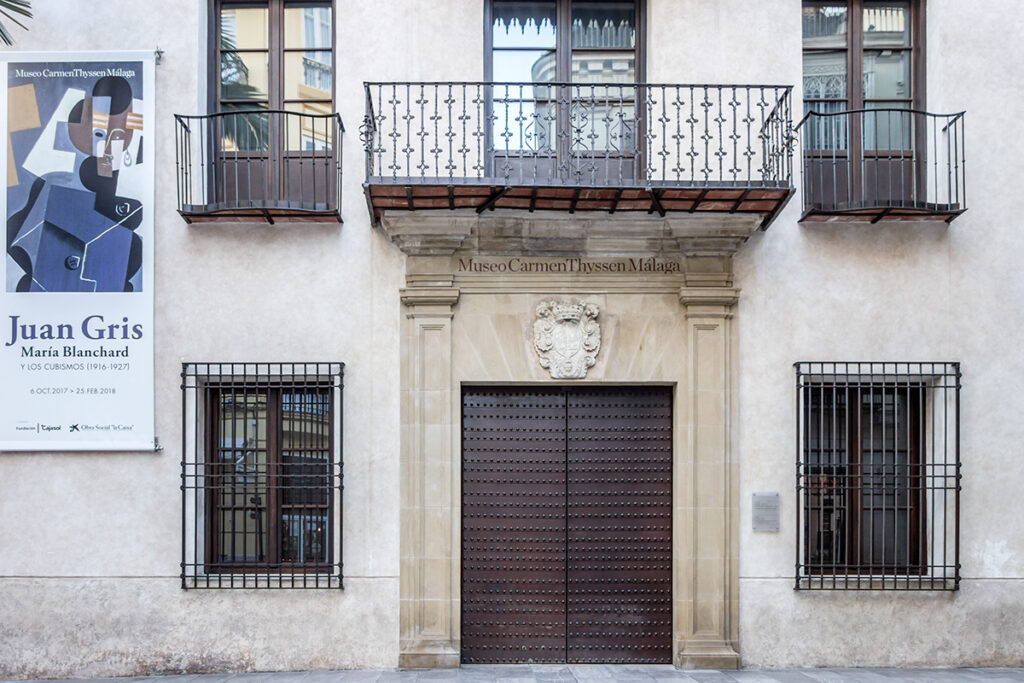
If you haven’t had enough museums yet, and enjoy 19th-century painting, drop by Museo Carmen Thyssen. If the name sounds familiar, it’s because you probably heard of the Thyssen-Bornemisza Museum in Madrid, where most of the Thyssen family art collection is displayed.
Malaga’s museum displays the art collection of Carmen Thyssen – the fith (and final) wife of Baron Hans Heinrich Thyssen-Bornemisza. Located in Palacio de Villalón – a late 15th-century noble home, the museum is a lovely space to explore. The arched porticos and balconies of the palace’s interior make you feel like you’ve been transported to the times of the Renaissance while enjoying Spanish and Andalusian paintings from the 19th and early 20th centuries.
Mercado de Atarazanas
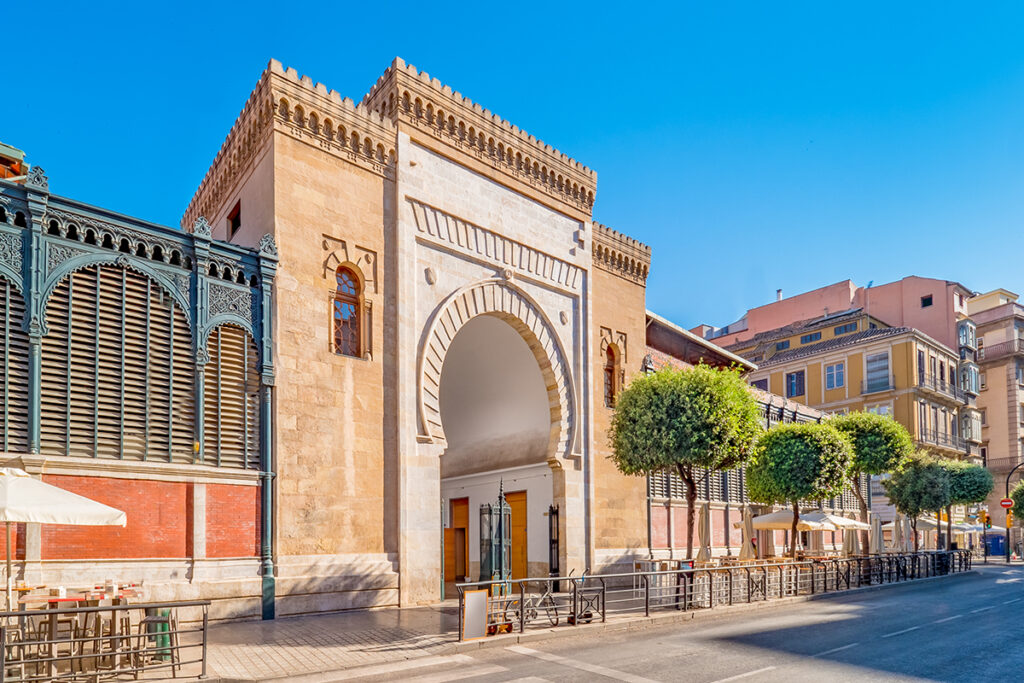
The atmospheric Mercado de Atarazanas is a bustling local market located in the heart of the old town. The building that houses the market was designed in Mudehar style, which refers to the uniquely Spanish architectural style where Christian architects used Moorish design elements in their creations. The most impressive part of the building is the distinctly Moorish arch at the entrance. You can’t help but feel like you are heading into an Arab bazaar of Al-Andalus days.
This marble arch belonged to the Nazrid shipyard that stood on this site. And it gives the name to the markets – Mercado de las Atarazanas, meaning the Market of the shipyards. Today there are some popular tapas bars near the arch, known for offering good quality yet inexpensive dishes.
Hammam Al-Andalus
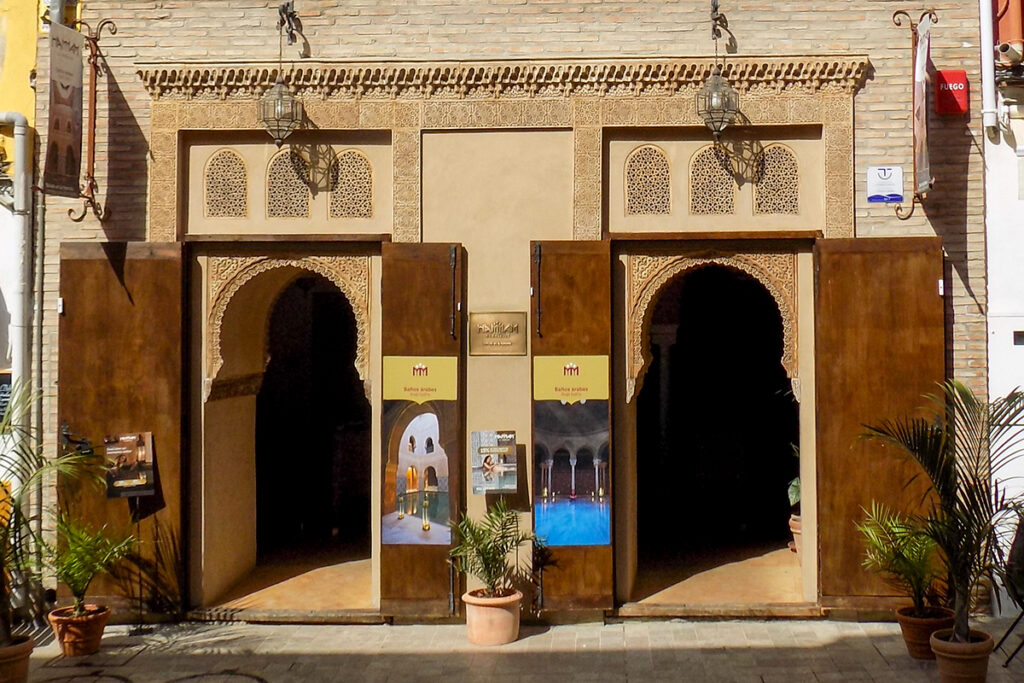
To relax after a day of walking around Malaga’s old town and to immerse yourself in its rich Arab heritage, head to Hammam al-Andalus.
It’s a charming space with earth-coloured walls, dim lighting, soft Arabic music and heavenly scents. The bath experience starts at 39 euros, and you have an hour to soak in different pools and spend some time in the steam room.
The right way to do it is to start in the warm pool to acclimatize, then wade into the hot pool, which is just like bathing in a hot spring, then grit your teeth and dip yourself into the cold pool before heading into the steam room. And repeat. In the end, you’ll be so relaxed that you’ll drift off to sleep as soon as your head hits the pillow.
You can also add a massage or the traditional hot stones experience to your bathing. There are plenty of different options available.
More on Exploring Spain
- 10 Ideas for Planning an Amazing Southern Spain Road Trip
- 26 Things to Do in Cordoba: Guide to Planning Cordoba itinerary
- Roman Cordoba Self-Guided Walk
- Guide to Visiting Cordoba Mezquita, When to Visit and What to See
- Discover Moorish Cordoba in 16 Monuments
- 15 Picturesque Walled Cities in Spain – Beyond Game of Thrones
- 16 Best Things to Do in Avila – Spain’s Amazing Medieval Walled Town
- 17 Fabulous Weekend Breaks in Spain: Must-See Destinations and Hidden Gems
- Sacromonte Caves: The Best-Kept Secret in Granada
- Discover Moorish Granada in One Day on This Self-Guided Walk

